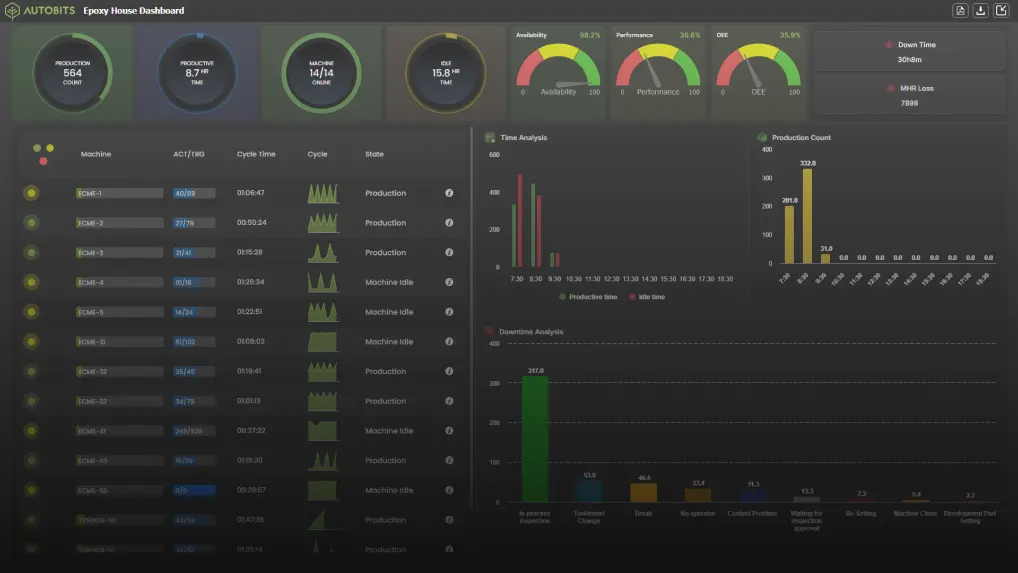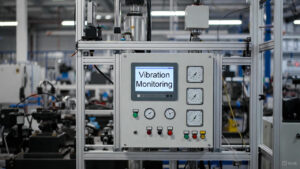Advancement and Transformation are the truth of today’s fast paced world. The world is moving ahead, and at a lightning speed. Today whatsoever fails at keeping up gets left behind. Change, has ceased to exist as a choice and is now but a necessity.
This lightening sharp nature of present has come up as a challenge for businesses and CEO’s. The essentials have increased. Today, for the CEO of a manufacturing company essentials apart from finance, marketing, and planning have outgrown. Today, more than ever, for the CEO of any manufacturing company, developing a high-performance team, leading it, and overlooking operations ensuring consistent delivery of high-quality products to maximize profits has become vital. Now is the time of Industry 4.0, and it is here.
An Industry 4.0 framework gathers data directly from machines – development, downtime, uptime, efficiency, maintenance, and human resources – and displays it to decision makers or sends it to other applications for processing. It gathers a large amount of data, analyses it, and presents it to decision makers at different levels of the company. Different numbers at different levels. These figures must be used to boost productivity.
Industry 4.0, which is the fourth industrial revolution, is the ongoing automation of traditional manufacturing and industrial practices, using modern smart technology. Now, your whole process will be seamless thanks to it. If properly implemented and used, it will reveal the truth about what is going on in your business.
In one of the companies utilizing AUTOBITS 4.0, for instance, the CEO completely designated the work of Industry 4.0 execution to the shop head. The CEO had nothing to do with it. AUTOBITS has configurable formulae for calculating OEE, and the shop head insisted on using ALL downtime in the OEE estimates, resulting in perfect “world-class” OEE numbers reaching 85%. For example, if a normal component unload/load time is 1 minute, a 10-minute downtime is considered part of the cycle rather than 9 minutes. The same can be said for setup times. The company is deceiving itself by relying on misleading productivity figures, and it is squandering a golden opportunity to increase profits.
Every organization, at every level, has two types of people. First is the Transparency enthusiast and second is the Transparency Despiser. Here the Transparency Enthusiast is a self-motivated individual who thrives for the best, is secure in his abilities, and sees transparency as an opportunity to change things even further whereas the Transparency Despiser is an individual with low skill and motivation whose longevity in the company depends on feeding fake efficiency statistics before the hierarchy as feeding reality would result to addressing issues which they lack the ability to confront.
Industry 4.0 system aids leaders to base their decisions on real-time information. You, as the CEO, are inspiring the transparency lover and making life tough for the transparency hater, pushing the latter to develop his motivation and skills by becoming active in the implementation of Industry 4.0 and then closely monitoring it. As a result, by being actively involved in the development and operation of Industry 4.0, you can improve both the quality of your operations and the performance of your team.
You must be heavily involved at first, then gradually decrease your involvement. You must examine efficiency figures, ask people to take action, and track the actions’ progress. Efficiency metrics can be anything you want, depending on your target area – OEE, spindle use, rejections, downtime, and so on.
Here’s a blueprint for a CEO’s job in implementing Industry 4.0:
Months 1-2:
- Review the previous day’s productivity numbers every morning – 30 minutes, every day
Month 3-forever:
- Review the previous week’s productivity numbers every Monday morning – 1 hour, per week
- Look at long-term patterns in efficiency numbers on the first of the month – 2 hours, every month
Effective AUTOBITS installations have seen one or more of the following advantages: Despite increased sales, no new machine acquisitions have been made for at least a year. OEE has doubled, consumable costs have decreased significantly (energy, combustion gases), workers have switched to working two shifts instead of three (16 hours instead of 24), and manpower costs have decreased. Both of these things, of course, lead to profits.
Industry 4.0 is a great friend of the CEO, and the CEO’s position is indeed crucial in its implementation for success.





